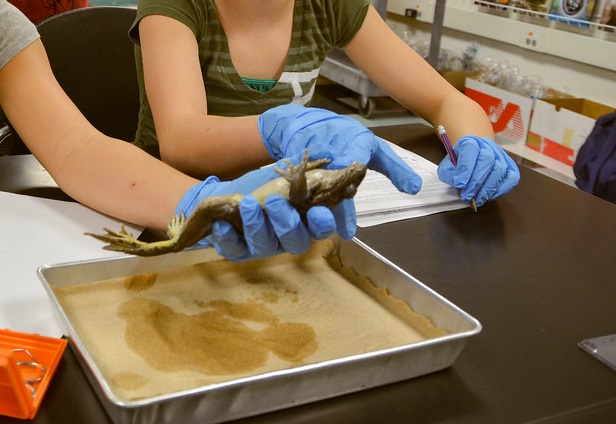
J.W. Mitchell High School in New Port Richey, Florida has become the first school in the world to use man-made, synthetic frogs for science class dissections. About 100 of the reusable synthetic frogs were dissected by students on Nov. 20, according to a release by SynDaver, the company that created them. The SynFrog is expected to eventually replace dead frogs for use in dissections at schools nationwide.
The Tampa-based developer created the hyper-realistic model frogs with funding from animal rights group People for the Ethical Treatment of Animals (PETA). The models are designed to mimic the visual and textural elements of a live female frog, complete with a skeleton, muscles, skin, organs, and a reproductive system with eggs. It is 1-foot long, weighs roughly 2 pounds, and costs $150.
Shalin G. Gala, PETA’s vice president of International Laboratory Methods, said in a statement, “We’re proud to have found a partner in SynDaver to bring this revolutionary new educational tool to life, replacing the outdated use of once-living frogs forever. We look forward to schools around the world adopting this state-of-the-art technology that will not only save millions of frogs, but is a far more effective and safer teaching tool.” According to PETA, around 3 million frogs are killed each year for classroom use.
There a number of benefits to using the models instead of real frogs for classroom dissections. In addition to removing the guts and gore associated with cutting open slimy amphibians, it also prevents the kids from coming into contact with the harmful chemicals used to preserve the frogs. Dr. Christopher Sakezles, founder of SynDaver, said, “SynFrog not only looks and feels like a real frog, it’s physically safer to dissect than a real preserved frog because it doesn’t contain potentially harmful chemicals like formalin.” They also eliminate the ethical dilemma some people have over the killing of live amphibians for research.
